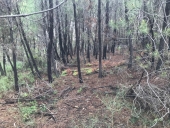Hi Asa,
An in-depth set of questions like this is hard to answer completely in this setting, but some thoughts based on our experience in Costa Rica.
-abandon the idea that you are going to grow western style temperate veggies, such as tomato, eggplant, etc. This is possible, but very difficult due to pest pressure and the intensity of the rain. Focus instead on tropical perennial vegetables such as Katuk, Chaya, Okinawan Spinach, Kang Kong, etc. These are the low hanging fruit of tropical gardening. ECHO in Florida is a great resource. This requires an adaption of the diet away from western temperate foods that many of us transplants grew up on.
-you are asking the right questions about indigenous diets. Try and learn what folks ate 50, 100, 500 years ago. Often the most nutritious crops are semi wild and consider "poor" folk food. Re-discover these.
-your understanding on the nutrient cycle is right on. So in practice this means don't try and build soil or humus, that is for temperate folks, just add lots of organic matter, and keep adding. Build the plant infrastructure so that you have a constant supply of mulch from coppiced and pruned plants, preferably legumes.
-raise the garden beds and focus on biochar and bioferments such as EM or Indigenous MO,
compost teas, etc.
You are on the right track, due your due diligence, start small, and pay attention to the feedback.
Saludos
Scott





 1
1




 2
2
























